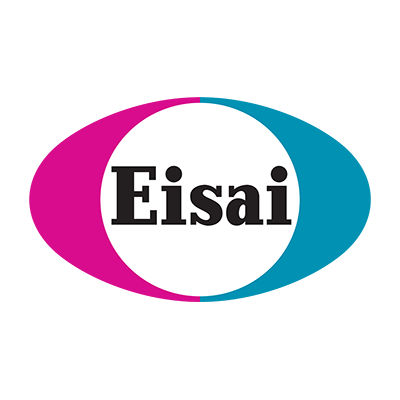预约演示
更新于:2025-05-07
Anastomotic ulcer
吻合口溃疡
更新于:2025-05-07
基本信息
别名 ANASTOMOTIC ULCER、Anastomotic ulcer、Anastomotic ulcer, NOS + [3] |
简介- |
关联
12
项与 吻合口溃疡 相关的药物作用机制 质子泵抑制剂 |
在研机构 |
原研机构 |
非在研适应症- |
最高研发阶段批准上市 |
首次获批国家/地区 中国 |
首次获批日期2022-09-30 |
作用机制 质子泵抑制剂 |
原研机构 |
最高研发阶段批准上市 |
首次获批国家/地区 奥地利 [+15] |
首次获批日期2000-12-07 |
作用机制 质子泵抑制剂 |
原研机构 |
最高研发阶段批准上市 |
首次获批国家/地区 日本 |
首次获批日期1997-10-14 |
78
项与 吻合口溃疡 相关的临床试验NCT06543316
Accelerated Marginal Ulcer Healing With Low-Thermal Argon Plasma Endoscopic Treatment
The objective of the study is to investigate the treatment of marginal ulcers with Low Thermal plasma in an endoscopic setting. By a treatment of the ulcerated areas with argon plasma with low power settings (
1 W) we hypothesize that the size of the ulcers will shrink, and the healing is accelerated compared to standard of care alone. Patients will benefit from this minimally invasive approach compared to a much more invasive surgical approach that comes with higher risks and hospital stay length time. From a societal and scientific perspective, this study aims to extend the well-documented clinical benefits of plasma technology - from external wound healing to internal ulcer treatment - within an endoscopic framework. The success of this study could pave the way for broader applications of LTP in the treatment of other endoscopically accessible conditions such as peptic ulcers, duodenal ulcers and esophageal ulcers. This advancement has the potential not only to improve patient outcomes through less invasive methods, but also to position LTP as a cornerstone in the future of gastroenterological wound management strategies.
1 W) we hypothesize that the size of the ulcers will shrink, and the healing is accelerated compared to standard of care alone. Patients will benefit from this minimally invasive approach compared to a much more invasive surgical approach that comes with higher risks and hospital stay length time. From a societal and scientific perspective, this study aims to extend the well-documented clinical benefits of plasma technology - from external wound healing to internal ulcer treatment - within an endoscopic framework. The success of this study could pave the way for broader applications of LTP in the treatment of other endoscopically accessible conditions such as peptic ulcers, duodenal ulcers and esophageal ulcers. This advancement has the potential not only to improve patient outcomes through less invasive methods, but also to position LTP as a cornerstone in the future of gastroenterological wound management strategies.
开始日期2025-02-01 |
申办/合作机构 |
CTR20244553
评估受试制剂奥美拉唑肠溶片(规格:20 mg)与参比制剂奥美拉唑肠溶片(Omepral®,规格:20 mg)在健康成年参与者餐后状态下的生物等效性试验
主要目的:研究餐后状态下单次口服受试制剂奥美拉唑肠溶片(规格:20 mg,浙江京新药业股份有限公司生产)与参比制剂奥美拉唑肠溶片(Omepral®,规格:20 mg,太陽ファルマ株式会社持证)在健康成年参与者体内的药代动力学,评价两种制剂是否具有生物等效性。
次要目的:研究受试制剂奥美拉唑肠溶片(规格:20 mg)和参比制剂奥美拉唑肠溶片(Omepral®,规格:20 mg)在健康成年参与者中的安全性。
开始日期2024-12-28 |
申办/合作机构 |
CTR20243909
兰索拉唑碳酸氢钠干混悬剂(30mg/1680mg)在中国健康成人中单次和多次给药的药代动力学、药效动力学以及食物影响试验
以健康受试者为试验对象,兰索拉唑碳酸氢钠干混悬剂(30mg/1680mg)为受试制剂,兰索拉唑碳酸氢钠胶囊(30mg/1100mg)为参比制剂,采用单次和多次给药试验设计,进行两制剂药代动力学、药效动力学比较试验以及食物对受试制剂PK参数影响试验:
1. 比较单次和多次给药后受试制剂和参比制剂药代动力学参数;
2. 比较单次和多次给药后受试制剂和参比制剂药效动力学参数;
3. 评价食物对受试制剂药代动力学参数的影响;
4. 观察受试制剂和参比制剂在中国健康受试者中的安全性。
开始日期2024-10-28 |
申办/合作机构  南京海纳医药科技股份有限公司 南京海纳医药科技股份有限公司 [+1] |
100 项与 吻合口溃疡 相关的临床结果
登录后查看更多信息
100 项与 吻合口溃疡 相关的转化医学
登录后查看更多信息
0 项与 吻合口溃疡 相关的专利(医药)
登录后查看更多信息
537
项与 吻合口溃疡 相关的文献(医药)2025-04-01·DEN Open
A case of gastrolithiasis produced by a 5‐day diet
Article
作者: Tanaka, Hironiri ; Sasaki, Shun ; Ota, Kazuhiro ; Nishikawa, Hiroki ; Iwatsubo, Taro ; Sugawara, Noriaki ; Takayama, Kazuki ; Mori, Yosuke ; Hakoda, Akitoshi
2025-04-01·Digestive and Liver Disease
Ischemic ulcers do not significantly impact endoscopic recurrence score in Crohn's disease: A multicenter comparative study after right-side colectomy
Article
作者: Calabrese, Giulio ; Imperatore, Nicola ; Testa, Anna ; Calderone, Silvia ; De Palma, Giovanni Domenico ; Castiglione, Fabiana ; Orlando, Ambrogio ; Toro, Benedetta ; Guarino, Alessia Dalila ; Fichera, Alessandro ; Nardone, Olga Maria ; Rispo, Antonio ; Tropeano, Francesca Paola ; Lamanda, Roberto ; Di Girolamo, Elena ; Solina, Gaspare ; Delrio, Paolo ; Luglio, Gaetano ; Cricrì, Michele ; Marone, Pietro
2025-02-01·Obesity Surgery
More Anastomotic Ulcers, Less Dumping, and Equal Weight Loss in Long vs. Short Gastric Pouch in Laparoscopic Roux-en-Y Gastric Bypass
Article
作者: Süsstrunk, Julian ; Bühler, Gaby ; Kraljević, Marko ; Fourie, Lana ; Peterli, Ralph ; Schneider, Romano ; Woellnerhanssen, Bettina
9
项与 吻合口溃疡 相关的新闻(医药)2025-03-31
药械追踪No.1 / 罗氏罗可适在华获批,治疗复发型和原发进展型多发性硬化症2025年3月31日,罗氏宣布,奥瑞利珠单抗注射液(商品名:罗可适/Ocrevus)已正式获得中国国家药品监督管理局(NMPA)批准,每六个月静脉输注一次给药,用于治疗成人复发型多发性硬化症(RMS,包括临床孤立综合征、复发缓解型多发性硬化和活动性继发进展型多发性硬化)和成人原发进展型多发性硬化症(PPMS)。多发性硬化症(MS)是一种中枢神经系统炎性疾病,患者体内免疫系统异常攻击中枢神经系统,导致中枢神经系统神经细胞的髓鞘发生炎症和损伤。其中RMS病程反复发作,最终可能导致永久性残疾;PPMS自发病开始,病情会持续进展恶化,患者运动、感觉和认知功能持续下降。奥瑞利珠单抗可通过靶向CD20阳性B细胞实现MS疾病修正,此前已在全球100多个国家和地区获批,并被多项权威指南列为MS标准治疗方案。针对RMS的两项随机、双盲、双模拟、阳性药物对照III期临床试验OPERA I和OPERA II结果显示,与干扰素β-1a治疗相比,奥瑞利珠单抗可以显著降低患者的年复发率(ARR)及致残比例(12周确认残疾进展CDP的患者比例)。针对PPMS的随机、双盲、安慰剂对照临床试验ORATORIO结果显示,与安慰剂组相比,患者接受奥瑞利珠单抗治疗可以显著降低12周CDP风险约24%(p=0.0321),达到主要终点。奥瑞利珠单抗此次在中国获批,将为中国MS患者提供全球先进的全新治疗选择。->点击文末阅读原文,解锁完整双语新闻No.2 / 赛诺菲血友病新药fitusiran及西门子伴随诊断在美获批2025年3月28日,赛诺菲宣布,美国食品药品监督管理局(FDA)已批准Qfitlia(fitusiran)作为常规预防治疗,用于伴或不伴凝血因子VIII或IX抑制物的血友病A或B成人患者和≥12岁青少年患者,以预防或减少其出血频率。Fitusiran注射液是首个降低抗凝血酶(一种抑制血液凝固的蛋白质)的血友病疗法,采用小分子干扰RNA技术,能够实现低频次治疗、皮下给药和低容量注射。Fitusiran此次获批基于III期ATLAS研究的积极数据。该研究显示,无论血友病患者是否存在抑制物,fitusiran均可实现年化出血率(ABR)指标具有临床意义的改善,发挥出色的出血预防效果,且每年仅需注射六次。在中国,Fitusiran注射液于2024年11月被纳入国家药品监督管理局药品审评中心《以患者为中心的罕见疾病药物研发试点工作计划(“关爱计划”)》试点项目;其在中国的上市申请预计将在2025年下半年收到监管决定。随着fitusiran的获批,FDA还同步批准了西门子医疗的INNOVANCE抗凝血酶检测作为fitusiran的伴随诊断,用于测量抗凝血酶水平。->点击文末阅读原文,解锁完整双语新闻企业动态No.1 / 卫材质子泵抑制剂波利特中国权益7.25亿元转让顶峰生物2025年3月28日,日本卫材制药宣布将其质子泵抑制剂波利特(雷贝拉唑钠肠溶片)的中国权益转让给康桥资本控股的北京顶峰生物医药有限公司(简称“顶峰生物”)。根据协议条款,卫材将获得7.25亿元人民币预付款,以及潜在的销售里程碑付款。目前顶峰生物已开始销售活动,卫材将在过渡期间管理波利特的生产制造和营销授权的转让。波利特是一款质子泵抑制剂,广泛应用于治疗胃溃疡、十二指肠溃疡、吻合口溃疡、反流性食管病以及卓-艾氏综合征等消化系统疾病。该产品2000年进入中国,快速放量并成为当时卫材中国的增长引擎。进入第九批集采后,该产品大幅降价。->点击文末阅读原文,解锁完整双语新闻No.2 / 恒瑞医药2024年财报:收入279.85亿元,创新药销售收入增长30.6%2025年3月30日,恒瑞医药(600276.SH)发布2024年财务业绩。2024年公司营业收入279.85亿元,同比增长22.63%。归母净利润63.37亿元,同比增长47.28%。创新药销售收入138.92亿元,同比增长30.6%。2024年,公司共有9项创新成果落地,包括4款1类新药获批上市:泰吉立定、夫那奇珠单抗、瑞卡西单抗和艾玛昔替尼,以及5项新适应证获批上市:氟唑帕利卵巢癌和乳腺癌适应证、阿帕替尼乳腺癌适应证、恒格列净糖尿病适应证以及泰吉立定用于术后中重度疼痛适应证。预计2025~2027年,公司分别有11项、13项和23项新药/新适应证获批上市。->点击文末阅读原文,解锁完整双语新闻No.3 / 绿叶制药2024年财报:产品销售收入56.9亿元2024年3月30日,绿叶制药(2186.HK)发布2024年财务业绩。报告期内,集团录得总收入60.61亿元,同比下降1.3%。总收入下降主要由非产品销售(如研发服务)收入下降导致。产品销售额56.895亿元,同比增长1.1%。于中国市场,集团主要产品均于其四大主要治疗领域(肿瘤科、中枢神经系统、心血管及代谢)具竞争地位。国际市场,集团的产品主要定位于中枢神经系统治疗领域,包括思瑞康和思瑞康缓释片、Erzofri、Rykindo、利斯的明单日透皮贴剂、利斯的明多日透皮贴剂、芬太尼贴剂及丁丙诺啡贴剂。报告期内,集团中枢神经系统治疗领域产品销售额减少4.8%,达16.13亿元。肿瘤治疗领域产品销售额减少1.8%,达20.846亿元。心血管系统治疗领域产品销售额减少1.6%,达16.6亿元。代谢治疗领域产品销售额下降13.7%,达人民币3.9亿元。->点击文末阅读原文,解锁完整双语新闻行业政策No.1 / 中保协发布商保药品目录A系初稿并征求意见2025年3月28日,中国保险行业协会(简称“中保协”)就商业健康保险药品目录-A系(简称“商保药品目录-A系”)初稿,并面向各健康险专委会常委单位征求意见。中保协曾在2025年2月组织召开座谈会,旨在集中行业资源构建全覆盖、多层次的商保药品目录体系,建立健全ABCDE目录体系,基于不同客群依次完善A系-惠民保产品、B系-百万医疗险产品、C系-中端医疗险产品等目录建设,逐步将医保目录外药品扩展覆盖至境内外药监局审批上市的所有药品(保留负面清单权利),给予消费者更加自由的选择权。商保药品目录建设工作首发聚焦“A系”目录,工作组统计了 29个省、自治区、直辖市的城市定制型商业医疗保险(又称“惠民保”)产品,在各产品中已覆盖的《国家基本医疗、工伤保险和生育保险药品目录》基础上,针对其中2619种特定药品目录,按照高频原则排序,同时与保费总量大、覆盖人群广的重点省、自治区、直辖市产品情况进行比照,梳理形成商保药品目录-A系初稿,共包括30款药品、涉及19种适应证。下一阶段,工作组将在现行A系目录基础上,逐步建立、完善商保药品目录形成机制和动态调整机制,结合行业建议不断优化、推进不同层级目录建设,同时将持续推动保险、医药、医院等相关方协同,推进药品入院、医疗险直赔快赔等相关工作有序开展。->点击阅读原文,解锁完整双语新闻No.2 / 卫健委:2025年底全面停止收取门诊预交金2025年3月28日,卫健委发布《关于规范公立医疗机构预交金管理工作的通知》,要求自2025年3月31日起,公立医疗机构要全面停止收取门诊预交金,2025年12月31日前完成存量门诊预交金的资金清算、退款,同时降低住院预交金额度。预交金指的是患者在门诊或者办理住院之前,需要预先支付的一笔押金,以作为后续治疗费用的保障,也是公立医院传统的收费方式。二十世纪80年代,为了减少患者排队次数、缩短缴费等候时间,医疗机构相继设立了住院预交金和门诊预交金。此前,已有多地取消了门诊预交金,此次为全国公立医疗机构全面取消,并限时清退患者已缴纳的门诊预交金。同时,降低住院预交金额度,参考同病种前3年度实际发生的次均住院费用和个人自付费用,合理确定住院预交金额度,医保患者住院预交金额度降至同病种同保障类别个人自付平均水平,自2025年6月30日起执行。->点击阅读原文,解锁完整双语新闻全球医疗情报领导者解锁隐藏在数据中的商业潜力 关于 G B I”自从2002年成立以来,GBI始终以技术为驱动,为药企、器械及行业相关服务商提供贯穿生命周期的全球药品市场竞争数据、全球行业资讯、HCPs洞察、全国医疗器械数据等商业信息与洞察,助力企业在进行战略布局和决策时,脱颖而出。历经20余年的深耕细作GBI已成为95%以上跨国药企、国内头部药企、咨询与投资机构等医疗圈灯塔用户值得信赖的长期合作伙伴。联系我们投稿 | 发稿 | 媒体合作▶ xujingou@baidu.com数据库 | 咨询服务 | 资讯追踪▶ 点击左下“阅读原文”完成表单填写点击阅读原文,解锁完整双语新闻
siRNA上市批准临床3期临床结果ASH会议
2025-03-31
·医药健闻
跨国药企在中国重点资讯文 | 苏丁企业动态西门子医疗西门子医疗与南京市投资促进局签署战略合作协议。双方将合作共建南京“西门子医疗开放式医工转化平台”,聚焦医工转化、临床技术应用(如光子计数CT、高端7T磁共振,先进复合手术室等)、数字医疗生态及国际人才合作。此外,双方将通过远程诊疗支持基层医联体,推动优质医疗资源下沉,探索元宇宙技术赋能医疗展示中心,呈现未来诊疗场景,为南京生物医药医疗产业集群注入创新动能,助力打造“健康中国”示范城市。阿斯利康阿斯利康与全球领袖共聚博鳌亚洲论坛2025年年会。阿斯利康全球首席执行官苏博科强调,科技在助力早诊断、早干预以推动共同健康方面,拥有变革性的力量,可使更多患者受益。苏博科表示,将坚定推动在绿色发展方面的政企合作。阿斯利康正携手全球及中国领军企业,共同推动医疗供应链脱碳。阿斯利康已携手合作伙伴发起一项可再生能源购买协议,目前共同采购了425吉瓦时的绿色电力,每年减少25万吨二氧化碳当量的排放。上周,阿斯利康宣布在北京新建全球战略研发中心,这是其在京投资25亿美元计划的一部分。美敦力3月24日,美敦力数字化医疗创新基地签约及揭幕活动在国际医药创新公园(BioPark)举行。这是美敦力在华设立的首个数字化医疗创新基地。该基地是美敦力在华设立的首个数字化医疗创新基地,致力于研发基于人工智能和大数据的疾病管理解决方案,将聚焦心血管、微创外科、神经科学等领域建设医疗培训中心;建立患者关爱中心,引入数字化技术,提升患者预防管理的服务水平;同时建设美敦力博物馆。该创新基地将于今年底正式投入运营。CSL全球生物治疗领域先驱CSL有限公司首席执行官兼董事总经理保罗·麦肯齐(Paul McKenzie)到访中国,参加中国发展高层论坛(CDF),并出席一系列重要的行业活动。CSL集团旗下子公司杰特贝林(CSL Behring)与国药控股于上海续签战略4PL合作协议。杰特贝林将与国药控股携手,依托其全国一体化的物流网络、多元化的渠道资源、完备的商业布局以及领先的数字化营销能力,通过创新服务模式,提升杰特贝林创新疗法和药品的可及性,惠及更多中国患者。诺和诺德业内消息称,诺和诺德全球高级副总裁兼大中国区总裁周霞萍向员工宣布了一项人事任命,自3月31日起,罕见病业务部负责人牛燕来(Nicole Niu)将担任新兴事业部(EBD)企业副总裁职务,领导诺和诺德中国EBD团队,推动诺和诺德中国GLP-1糖尿病产品线的可持续增长。丹纳赫2025年1月,胡翔宇正式担任丹纳赫中国生命科学平台总裁一职。他围绕丹纳赫中国生命科学平台的运行现状、本土化战略、行业发展趋势、全球市场竞争环境、平台重点关注领域以及创新生态构建等话题进行了深入交流。胡翔宇介绍:丹纳赫中国生命科学平台已成长为中国生命科学领域的中坚力量。2025年,平台将聚焦精准医疗、生物制药、合成生物学和数字生命科学等领域。围绕生命科学领域,将通过投资和收购、行业高质量合作以及深度本土化,三管齐下,持续巩固市场领先地位,推动业务发展。赛诺菲欧彼乐(Opella,赛诺菲消费者健康药业)联合京东健康在北京举办以“远离疲惫与脂肪肝”为主题的2025年度合作发布会,旨在通过医患教育、疾病科普等行动,整合彼此资源,共同提升公众对脂肪肝的认知。双方将整合各自优势,依托欧彼乐的专业资源和健康解决方案,以及京东健康的数字化服务平台,持续提升公众对脂肪肝的疾病认知,促进诊疗水平升级,增强人们的体重管理能力、提升整体健康水平。产业动态罗氏制药和默克共同宣布双方正式签订协议,就拓得康(通用名:特泊替尼)在中国大陆市场的商业化达成合作。双方将充分整合各自优势资源,推动特泊替尼惠及更多METex 14跳跃突变局部晚期或转移性非小细胞肺癌成人患者。通过这次合作,罗氏制药将进一步丰富在中国的肺癌产品管线,继续携手各方推动肺癌规范化诊疗水平提升。特泊替尼由德国默克公司研发,是全球首个获批上市的MET抑制剂。卫材制药(Eisai)宣布一项重大决策,已将其质子泵抑制剂Pariet(商品名:波利特,通用名:雷贝拉唑钠肠溶片)在中国的权利转让给康桥资本集团(CBC Group)控制的北京顶峰生物医药有限公司(Peak Pharma)。波利特是一款知名的处方药,主要成分雷贝拉唑在抑制胃酸分泌方面效果显著,广泛用于治疗胃溃疡、十二指肠溃疡、吻合口溃疡、反流性食管病以及卓一艾氏综合征等消化系统疾病。拜耳与苏州浦合医药科技有限公司宣布,双方已就浦合医药口服小分子PRMT5抑制剂达成全球许可协议。该抑制剂可选择性靶向MTAP缺失型肿瘤。根据该协议,拜耳获得开发、制造和商业化MTA协同PRMT5抑制剂的全球独家许可。拜耳已招募首例患者参与I期人体首次剂量爬坡临床试验。该试验以BAY 3713372为代号,研究MTA协同PRMT5抑制剂用于治疗MTAP缺失型实体瘤。联邦制药宣布其全资附属公司联邦生物科技(珠海横琴)有限公司与诺和诺德股份有限公司签订独家许可协议。该协议涉及一种名为UBT251的药物,主要用于治疗肥胖、2型糖尿病等疾病,现处于早期临床开发阶段。根据协议,诺和诺德将获得全球(不包括中国大陆、香港、澳门和台湾)开发、制造和商业化UBT251的权利,而联邦生物科技则保留在上述地区的权利。联邦生物科技有资格收取2亿美元的预付款和最高18亿美元的潜在里程碑付款。恒瑞医药与默沙东(MSD)达成协议,将恒瑞的脂蛋白(a)口服小分子项目(包括名为HRS-5346的先导化合物)有偿许可给MSD,MSD将获得HRS-5346在大中华地区以外的全球范围内开发、生产和商业化的独家权利。默沙东将向恒瑞支付2亿美元的首付款,并且恒瑞有资格获得最高可达17.7亿美元的里程碑付款。阿斯利康宣布重度嗜酸粒细胞性哮喘(SEA)创新靶向生物制剂凡舒卓(本瑞利珠单抗注射液)在中国正式商业上市,用于成人和12岁及以上青少年重度嗜酸粒细胞性哮喘的维持治疗。本瑞利珠单抗是精准靶向嗜酸性粒细胞(EOS)的抗IL-5R创新生物制剂。阿斯利康的康可期(英文商品名:Calquence,通用名:阿可替尼胶囊)获中国国家药品监督管理局(NMPA)正式批准,本品单药适用于成人慢性淋巴细胞白血病(CLL)/小淋巴细胞淋巴瘤(SLL)患者。这是阿可替尼在中国获批的第3项适应症,标志着其将同时适用于初治和经治的CLL/SLL患者。在ADRIATIC III期临床试验中的中国队列研究数据显示:与安慰剂相比,阿斯利康的英飞凡(通用名:度伐利尤单抗)治疗同步放化疗(cCRT)后疾病无进展的局限期小细胞肺癌(LS-SCLC),患者在两个主要研究终点总生存期(OS)和无进展生存期(PFS)的获益趋势与全球患者一致。在全球530例随机受试者中95例(17.9%)为中国人群。礼来中国宣布,其阿尔茨海默病创新药物记能达(多奈单抗注射液)正式纳入广州定制型商业健康保险“穗新保珠江药安心”的创新药械保障目录。泰康口腔与瑞典Nobel种植牙品质联盟联合发布会3月20日举办,标志着双方合作的深化。泰康口腔是诺保科在中国市场中长期的重要合作伙伴,双方在推动口腔医疗技术进步和提升患者体验方面共同发力取得了显著成果。联系美通社+86-10-5953 9500info@prnasia.com
高管变更
2024-12-15
·药事纵横
1、品种介绍
兰索拉唑(Lansoprazole)首先转移到胃粘膜壁细胞泌酸区,在酸的作用下转变为有活性的结构,这种结构可以与质子泵(H++K+-ATP酶)的SH基结合,抑制该酶活性,从而抑制胃酸分泌。各国药典均未收载兰索拉唑口崩片。
原研国外上市情况:兰索拉唑属H++K+-ATP酶抑制剂(质子泵抑制剂),是日本武田药品工业株式会社开发的第二个质子泵抑制剂。兰索拉唑口崩片于2002年在美国FDA获批上市,临床上适用于胃溃疡、十二指肠溃疡、吻合口溃疡、反流性食管炎、卓-艾综合征。
原研国内上市情况:原研武田的兰索拉唑口崩片于2006在我国获批上市,规格:(1)15mg;(2)30mg(按兰索拉唑计)。适应症:胃溃疡、十二指肠溃疡、吻合口溃疡、反流性食管炎、卓-艾综合征。用法用量:服药时可以将药片置于舌上,用唾液湿润并以舌轻压,崩解后随唾液吞服。也可以水送服。
中美两国仿制情况:FDA目前已有6家仿制药获批,其中1家处于撤市状态。本品较难仿制,目前国内无仿制药上市,仅有进口5.2类正在申报生产阶段。目前本品在美国的申报获批情况汇总如下表所示:
在中国目前只有原研进口产品和1家正在申报生产的5.2类产品,持有人为Dr. Reddy’s Laboratories Limited,受理号为JYHS2400009。
国家局公布了本品的参比制剂,即:
经查询,FDA公布了该品种的个药指南,对溶出曲线及体外鼻胃管对比研究进行了相关规定。
2、仿制难点
本品采用多单元微丸(肠溶微丸)压片工艺制备,故其仿制壁垒较高,难点主要在以下几点:①原料药粒度分布:原料药粒度分布对制备工艺、产品溶出及含量均匀度均有影响;②空白丸芯的合理选择:空白丸芯的尺寸及用量均对产品有重要影响,市面上的空白丸芯多种多样,需谨慎选择;③各层包衣增重的确定:隔离层和肠溶层的包衣增重影响其最终微丸的粒度分布,需合理设计各层包衣增重范围;④压片压力的确定:压力过大会导致微丸变形或破损,压力过小会导致产品脆碎度不符合要求,所选压片压力既要确保微丸的完整性又要保证产品脆碎度、崩解时限及溶出行为符合要求;⑤溶出行为:需按照FDA溶出度数据库中的方法并结合中国监管机构对溶出曲线的相关要求进行溶出曲线相似性研究及剂量倾泻研究,本品做到溶出曲线相似存在一定难度;⑥生物等效性研究:该口崩片处方工艺均较复杂,体内生物等效性研究也存在一定难度。
3、本品研发关注点
口崩片是在口腔内不需要用水即能迅速崩解或溶解的片剂,FDA对口崩片的定义为一种含有药物的固体剂型,当放在舌头上时,通常会在几秒钟内迅速崩解。一般适合于小剂量原料药物,常用于吞咽困难或不配合服药的患者。中国和美国对口崩片技术要求的对比如下表所示:
笔者结合前期文献调研及现有认知对本品的研发关注点进行简单介绍,以期对企业有一定的启示。
①空白丸芯的用量和尺寸
空白丸芯一般是一种惰性内核,形成包衣的基础。其粒度和处方用量十分关键,合理的粒度分布是获得所需的最终外包衣微丸尺寸的基础。可采用一定方式对参比制剂所用空白丸芯进行表征,尽可能获取参比制剂所用空白丸芯的相关信息。如空白丸芯数量较少,最终微丸尺寸就会增加,导致压片过程中微丸易于变形。故空白丸芯的用量和尺寸均会对产品制备产生重要影响。
②原料药粒度分布
首先对兰索拉唑原料药进行简单介绍,在N,N-二甲基甲酰胺中易容,在甲醇中溶解,在乙醇中略溶,在水中几乎不溶。其BCS分类具体如下表所示:
不同来源的生物药剂学分类
其BCS分类为II类,为低溶解性药物。有文献披露本品原料药占比较低,且原料药溶解性低,故原料药粒度在一定程度上会影响本品的制备工艺、产品的溶出及含量均匀度。需根据实际研究情况并结合文献调研,制定合理的原料药粒度范围(粒度测定方法需经过验证)。
③隔离层包衣及肠溶层包衣微丸的粒度分布
在对参比制剂进行表征前提下,对仿制制剂制定合理的微丸尺寸。根据最终拟定的微丸尺寸并结合产品的溶出行为,制定合理的隔离层和肠溶层包衣增重及合理且一致的隔离层微丸和肠溶层微丸粒度分布。
④溶出行为
各国药典均未收载兰索拉唑口崩片,FDA溶出度数据库中本品的溶出度测定条件如下表所示:
可参照FDA及中国监管机构对仿制药溶出曲线相似性的相关要求开展相关研究,确保仿制制剂与参比制剂溶出行为的一致性,这是确保体内BE的基础。
⑤崩解时限
崩解时限是口崩片的关键质量属性,下表对比了中国药典和美国药典中崩解时限的测定方法:
中国药典与美国药典关于口崩片崩解时限测定装置的最大区别在于筛孔内径,中国药典规定的筛孔内径为710μm,小于USP<701>崩解时限的筛孔内径1.8~2.2mm。在这种情况下,采用中国药典的装置测定的崩解时限结果一般高于美国药典方法。某品种采用USP方法测得的崩解时限在30秒以下,而采用中国药典方法测得的崩解时限接近60秒,即崩解时限的测定结果与所用测定方法密切相关。
此外,CDE于2003年发布的《口腔崩解片的剂型特点和质量控制会议纪要》对口崩片崩解时限检测有如下要求“崩解时间在一分钟以内,介质首选用水,用量应小于2ml,温度为37℃”,同时对口感也有一定要求,企业可参照相关要求,模拟产品口服实际情况,采用少量溶剂开展崩解时限研究,并提供口感等相关资料。
4、小结
兰索拉唑口崩片属于高难度复杂仿制制剂,目前国内无仿制,原研独占市场。为促进本品的仿制,笔者结合文献调研以及现有经验和认知,对本品的仿制难点及研发关注点进行解读,以期对业界有一定启示作用。
如有不对之处,欢迎批评指正。
5、参考文献
1. FDA行业指南《Guidance for Industry:Orally Disintegrating Tablets》
2. 2020年版中国药典
3. 兰索拉唑口崩片的FDA个药指南
药事纵横征稿启事
上市批准
分析
对领域进行一次全面的分析。
登录
或

生物医药百科问答
全新生物医药AI Agent 覆盖科研全链路,让突破性发现快人一步
立即开始免费试用!
智慧芽新药情报库是智慧芽专为生命科学人士构建的基于AI的创新药情报平台,助您全方位提升您的研发与决策效率。
立即开始数据试用!
智慧芽新药库数据也通过智慧芽数据服务平台,以API或者数据包形式对外开放,助您更加充分利用智慧芽新药情报信息。
生物序列数据库
生物药研发创新
免费使用
化学结构数据库
小分子化药研发创新
免费使用






